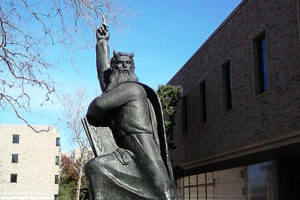Should Notre Dame Fans Brace Themselves for a Big Skid? Unexpectedly soft first half of the season followed by murderer’s row closing stretch.

Resurgent Notre Dame rides a 5-1 bubble that has fans and click-hungry media thinking big. Yet strength of schedule is about to go from padded to rock solid. Heading into the season Notre Dame was a 4-8 ball club, diving into a 12-game regular season featuring 11 teams that made bowls the previous year. The one opponent who had missed
» Read more